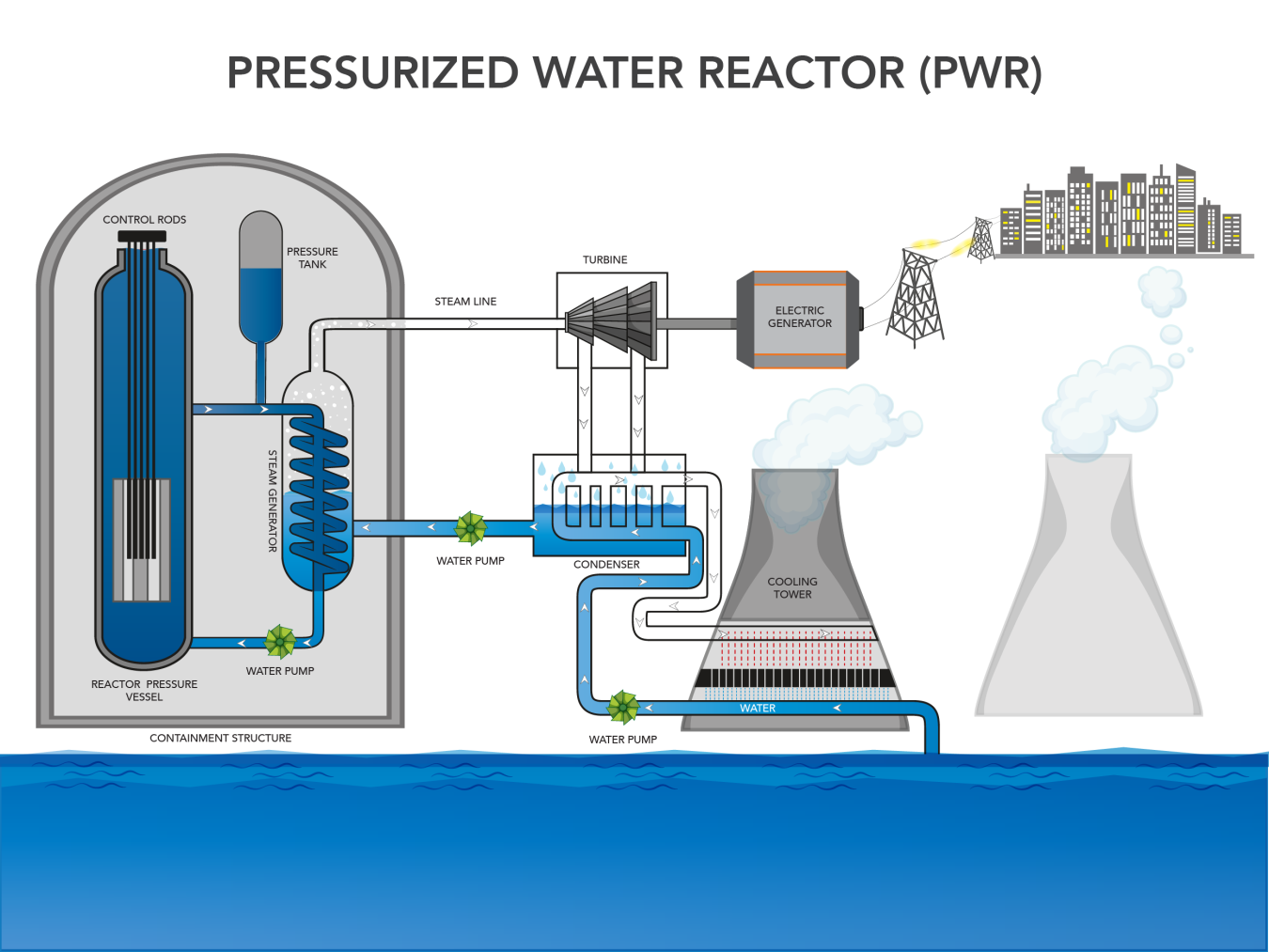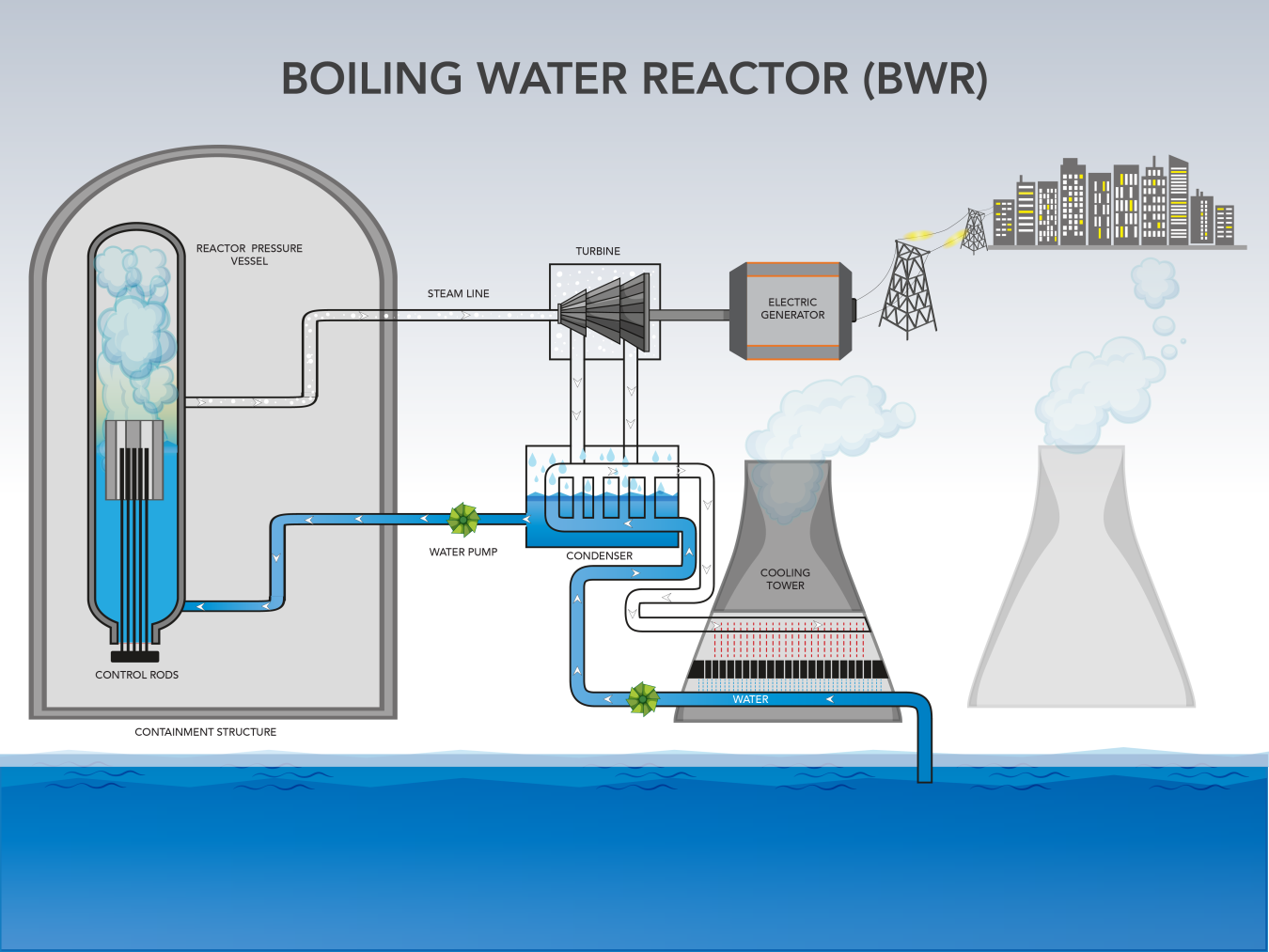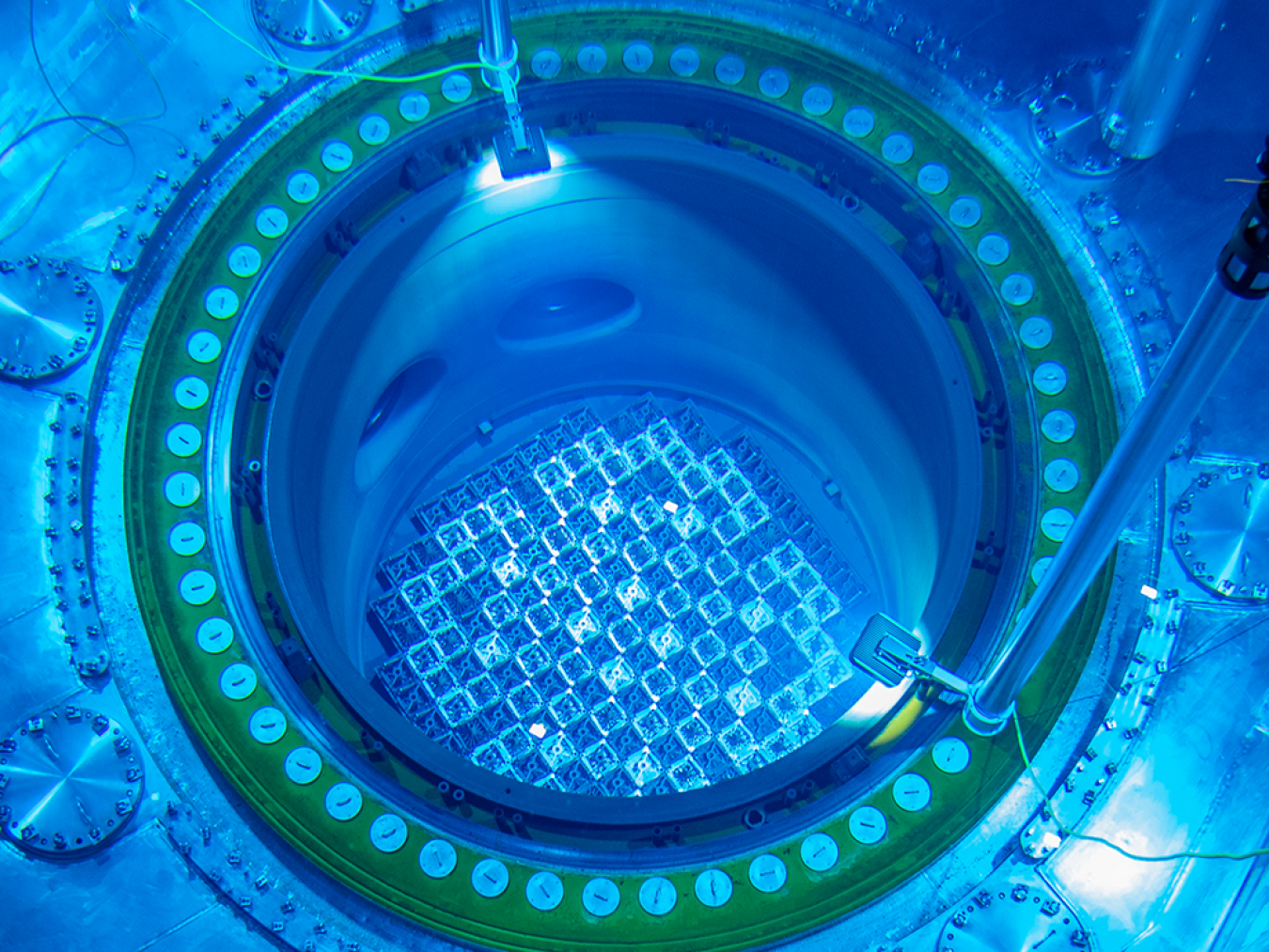Learn how boiling and pressurized light-water reactors work.
May 19, 2025Nuclear reactors are the heart of a nuclear power plant.
They contain and control nuclear chain reactions that produce heat through a physical process called fission. That heat is used to make steam that spins a turbine to create electricity.
With more than 400 commercial reactors worldwide, including 94 in the United States, nuclear power continues to be one of the largest sources of reliable, affordable, and secure electricity available.
Nuclear Fission Creates Heat
The main job of a reactor is to house and control nuclear fission—a process where atoms split and release energy.

Fission and Fusion: What is the Difference?
Reactors use uranium for nuclear fuel. The uranium is processed into small ceramic pellets and stacked together into sealed metal tubes called fuel rods. Typically, more than 200 of these rods are bundled together to form a fuel assembly. A reactor core is typically made up of a couple hundred assemblies, depending on power level.
Inside the reactor vessel, the fuel rods are immersed in water which acts as both a coolant and moderator. The moderator helps slow down the neutrons produced by fission to sustain the chain reaction.
Control rods can then be inserted into the reactor core to reduce the reaction rate or withdrawn to increase it.
The heat created by fission turns the water into steam, which spins a turbine to produce electricity.
Types of Light-Water Reactors in the United States
All commercial nuclear reactors in the United States are light-water reactors. This means they use normal water as both a coolant and neutron moderator.
There are two types of light-water reactors operating in America.
Pressurized Water Reactors

More than 65% of the commercial reactors in the United States are pressurized-water reactors or PWRs. These reactors pump water into the reactor core under high pressure to prevent the water from boiling.
The water in the core is heated by nuclear fission and then pumped into tubes inside a heat exchanger. Those tubes heat a separate water source to create steam. The steam then turns an electric generator to produce electricity.
The core water cycles back to the reactor to be reheated and the process is repeated.
Boiling Water Reactors

Roughly a third of the reactors operating in the United States are boiling water reactors (BWRs).
BWRs heat water and produce steam directly inside the reactor vessel. Water is pumped up through the reactor core and heated by fission. Pipes then feed the steam directly to a turbine to produce electricity.
The unused steam is then condensed back to water and reused in the heating process.
*Updated May 2025


